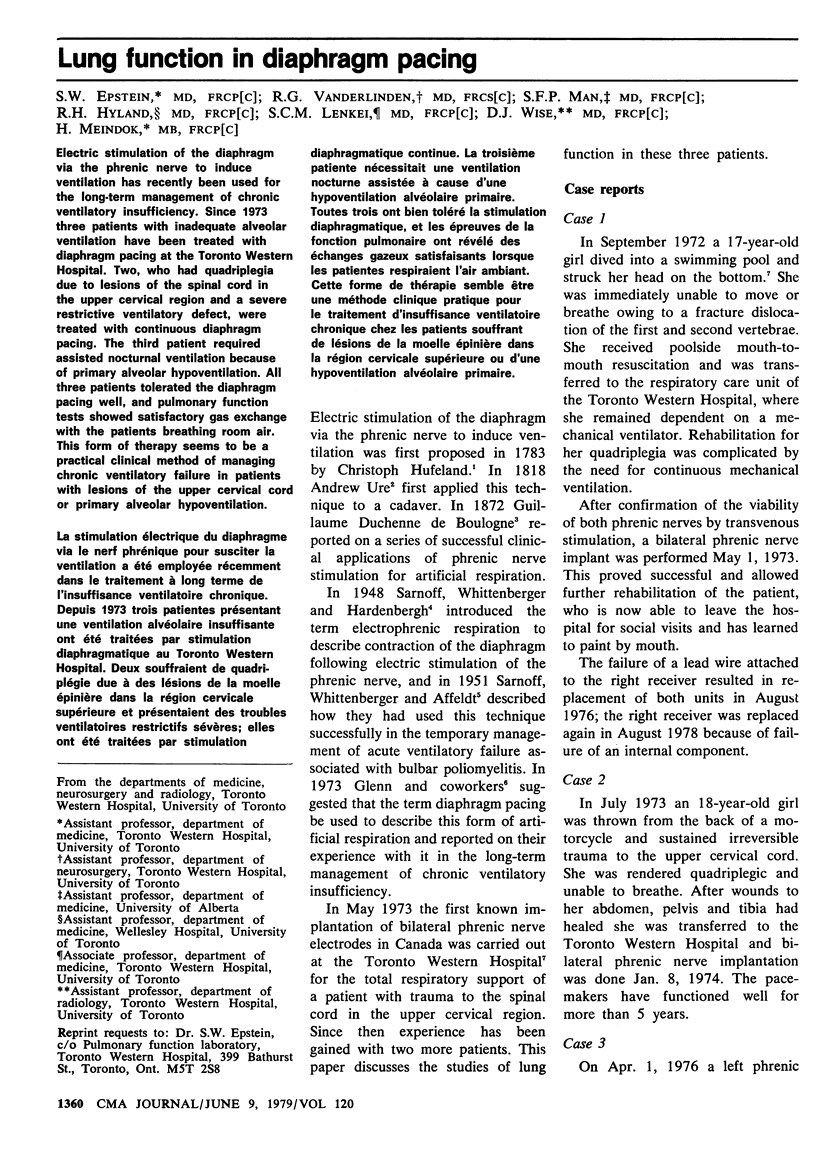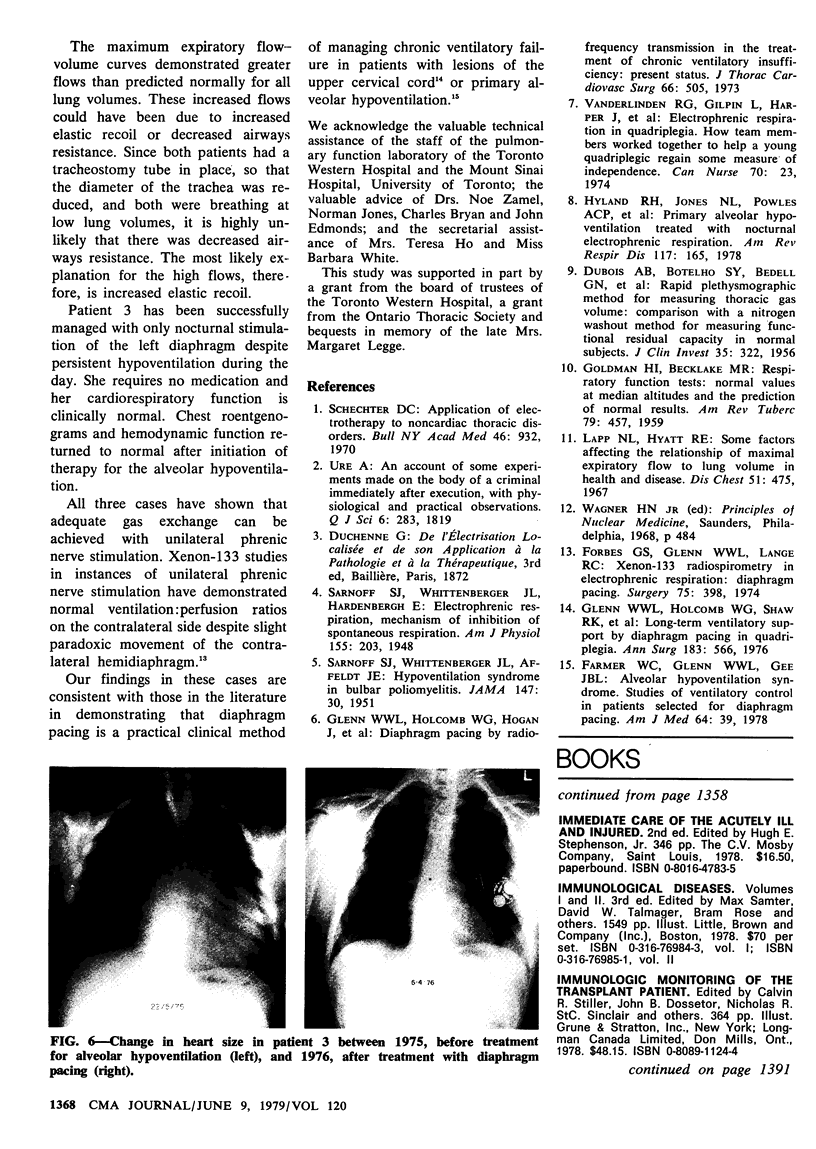Abstract
Electric stimulation of the diaphragm via the phrenic nerve to induce ventilation has recently been used for the long-term management of chronic ventilatory insufficiency. Since 1973 three patients with inadequate alveolar ventilation have been treated with diaphragm pacing at the Toronto Western Hospital. Two, who had quadriplegia due to lesions of the spinal cord in the upper cervical region and a severe restrictive ventilatory defect, were treated with continuous diaphragm pacing. The third patient required assisted nocturnal ventilation because of primary alveolar hypoventilation. All three patients tolerated the diaphragm pacing well, and pulmonary function tests showed satisfactory gas exchange with the patients breathing room air. This form of therapy seems to be a practical clinical method of managing chronic ventilatory failure in patients with lesions of the upper cervical cord or primary alveolar hypoventilation.
Full text
PDF




Images in this article
Selected References
These references are in PubMed. This may not be the complete list of references from this article.
- DUBOIS A. B., BOTELHO S. Y., BEDELL G. N., MARSHALL R., COMROE J. H., Jr A rapid plethysmographic method for measuring thoracic gas volume: a comparison with a nitrogen washout method for measuring functional residual capacity in normal subjects. J Clin Invest. 1956 Mar;35(3):322–326. doi: 10.1172/JCI103281. [DOI] [PMC free article] [PubMed] [Google Scholar]
- Farmer W. C., Glenn W. W., Gee J. B. Alveolar hypoventilation syndrome. Studies of ventilatory control in patients selected for diaphragm pacing. Am J Med. 1978 Jan;64(1):39–49. doi: 10.1016/0002-9343(78)90178-x. [DOI] [PubMed] [Google Scholar]
- Forbes G. S., Glenn W. W., Lange R. C. Xenon-133 radiospirometry in electrophrenic respiration: diaphragm pacing. Surgery. 1974 Mar;75(3):398–407. [PubMed] [Google Scholar]
- GOLDMAN H. I., BECKLAKE M. R. Respiratory function tests; normal values at median altitudes and the prediction of normal results. Am Rev Tuberc. 1959 Apr;79(4):457–467. doi: 10.1164/artpd.1959.79.4.457. [DOI] [PubMed] [Google Scholar]
- Glenn W. W., Holcomb W. G., Hogan J., Matano I., Gee J. B., Motoyama E. K., Kim C. S., Poirier R. S., Forbes G. Diaphragm pacing by radiofrequency transmission in the treatment of chronic ventilatory insufficiency. Present status. J Thorac Cardiovasc Surg. 1973 Oct;66(4):505–520. [PubMed] [Google Scholar]
- Glenn W. W., Holcomb W. G., Shaw R. K., Hogan J. F., Holschuh K. R. Long-term ventilatory support by diaphragm pacing in quadriplegia. Ann Surg. 1976 May;183(5):566–577. doi: 10.1097/00000658-197605000-00014. [DOI] [PMC free article] [PubMed] [Google Scholar]
- Hyland R. H., Jones N. L., Powles A. C., Lenkie S. C., Vanderlinden R. G., Epstein S. W. Primary alveolar hypoventilation treated with nocturnal electrophrenic respiration. Am Rev Respir Dis. 1978 Jan;117(1):165–172. doi: 10.1164/arrd.1978.117.1.165. [DOI] [PubMed] [Google Scholar]
- Lapp N. L., Hyatt R. E. Some factors affecting the relationship of maximal expiratory flow to lung volume in health and disease. Dis Chest. 1967 May;51(5):475–481. doi: 10.1378/chest.51.5.475. [DOI] [PubMed] [Google Scholar]
- Schechter D. C. Application of electrotherapy to noncardiac thoracic disorders. Bull N Y Acad Med. 1970 Nov;46(11):932–951. [PMC free article] [PubMed] [Google Scholar]




